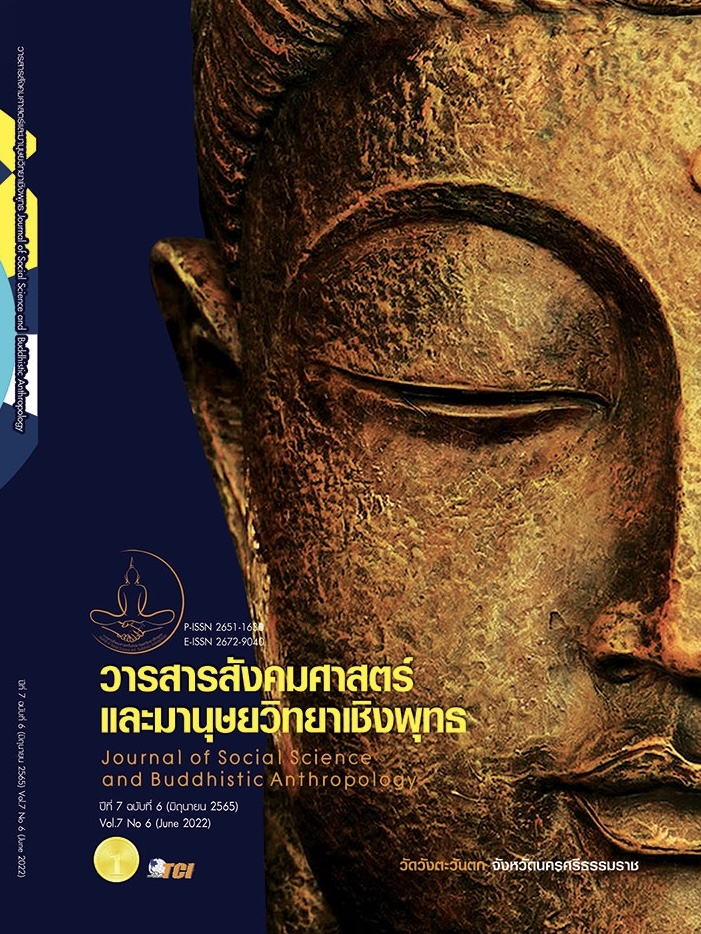MANUFACTURING GUIDELINE OF AN ACOUSTIC ABSORBER FROM HEMP FIBER WITH APPROPRIATED TECHNOLOGY IN COMMUNITY
Keywords:
Hemp Fiber, Sound Absorber, Computer Simulation, Appropriate TechnologyAbstract
The objectives of this research article were to study the mix ratio of hemp fibers and binders use in the production and for the parametric design of the sound-absorbing panels in the building, focusing on the production with appropriate technology at the community level. This creates a supply chain for utilizing hemp in the construction industry. Sound-absorbing materials are building engineering components that can add value to composite hemp products. Although the design of most sound-absorbing composites requires high-tech measuring instruments, the production process can use community-based technology. This research therefore consists of two steps: 1) a study of the appropriate composition of 3 types of binders, Natural rubber (Para-Rubber), Plaster (Lime), and Latex, a total of 60 samples. The relationship between density and Noise Reduction Coefficient (NRC) was investigated. The study was performed in the acoustic frequency range of 150 Hz to 5 kHz. Then, 2) the product parameterization design was studied to obtain an efficient shape and suitable for use as a sound-absorbing material in buildings and suitable for a low-pressure-heat process to present the production process by Using technology suitable for a community production. Research has shown that a plaster-based hemp composite with 0.40 gram per cubic centimeter density has the best sound-absorbing properties. The NRC is 0.43, and the resulting mixture can be used to produce a fully-functional prototype using ABS molded materials made from a 3D printer, enabling the model to be adapted to the needs and identity of the community further to develop the supply chain at the industrial level.
References
กฎกระทรวงสาธารณสุข. (2563). เรื่อง การขออนุญาตและการอนุญาตผลิต นำเข้า ส่งออก จำหน่าย หรือมีไว้ในครอบครองซึ่งยาเสพติดให้โทษในประเภท 5 เฉพาะกัญชง (Hemp). ราชกิจจานุเบกษา เล่ม 137 ตอนที่ 107 ก (10 ธันวาคม 2563).
วิศรุตม์ ธนสุกาญจน์ และคณะ. (2562). การตรวจสอบรูปทรงและประสิทธิภาพของแผ่นสวนศาสตร์ชีวภาพจากกัญชงคอมโพสิตเพื่อการใช้งานสำหรับห้องประชุม. ใน การประชุมวิชาการระดับชาติ ครั้งที่ 16. มหาวิทยาลัยเกษตรศาสตร์ วิทยาเขตกำแพงแสน.
สมประวิณ มันประเสริฐ. (2564). กัญชงกับศักยภาพการเป็นพืชเศรษฐกิจใหม่. เรียกใช้เมื่อ 5 มกราคม 2564 จาก https://www.bangkokbiznews.com/business/956430
Crini, G. et al. (2020). Traditional and new applications of hemp. Sustainable Agriculture Reviews, 42(2020). 37-87.
Dario, P. S. et al. (2017). Parametric Room Acoustic Workflows: Review and future perspectives. In Aalborg University. Lund University.
Elfordy, S. et al. (2008). Mechanical and Thermal Properties of Lime and Hemp Concrete (“hempcrete”) Manufactured by a Projection Process. Construction and Building Materials, 22(10), 2116-2123.
Form Us with Love. (2021). Form Us with Love. Retrieved May 4, 2011, from https://www.formuswithlove.se/
HempFlax. (2021). HempFlax. Retrieved May 4, 2021, from https://www.hempflax.com/en/
Hu, S. J. (2013). Evolving paradigms of manufacturing: From mass production to mass customization and personalization. Procedia Cirp, 7(2013), 3-8.
Karus, M. & Dominik, V. (2004). European Hemp Industry: Cultivation, Processing and Product Lines. Euphytica, 140(1-2), 7-12.
Kinnane, O. et al. (2016). Acoustic Absorption of Hemp-lime Construction. Construction and Building Materials, 122(2016), 674-682.
Manaila, E. et al. (2015). Polymeric Composites Based on Natural Rubber and Hemp Fibers. Iran Polym J Iranian Polymer Journal, 24(2), 135-148.
Oldham, D. J. et al. (2011). Sustainable acoustic absorbers from the biomass. Applied Acoustics, 72(6), 350-363.
Sassoni, E. et al. (2014). Novel Sustainable Hemp-based Composites for Application in the Building Industry: Physical, Thermal and Mechanical Characterization. Energy and Buildings, 77(2014), 219-226.
Thomas, M. R. (2017). Wayverb: A Graphical Tool for Hybrid Room Acoustics Simulation. In Master Thesis in Computer Science. University of Huddersfield.
Xiao, X. et al. (2019). Polylactide/hemp hurd biocomposites as sustainable 3D printing feedstock. Composites Science and Technology, 184(2019), 1-8.
Downloads
Published
How to Cite
Issue
Section
License
Copyright (c) 2022 Journal of Social Science and Buddhistic Anthropology

This work is licensed under a Creative Commons Attribution-NonCommercial-NoDerivatives 4.0 International License.








